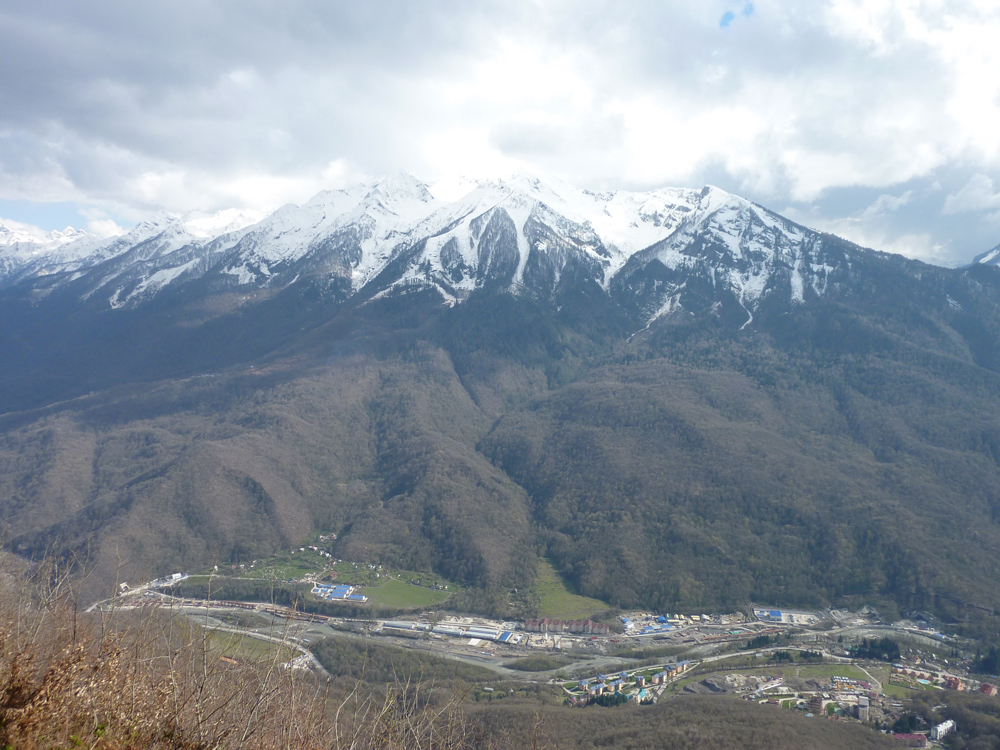
The second railway line Adler — Krasnaya Polyana is a line that should provide transportation services for the 2014 Winter Olympics in Sochi. The track of this line falls into the corridor chosen by Mosgiprotrans in the past years to build the high-speed railway line Center — South.
At first, according to the Bid Book it was planned to build Light Metro but the Russian Railways administration managed to prove that it was pointless to construct another transportation system. The resort of Sochi is the area from Tuapse to Adler which will be extended to Krasnaya Polyana after Olympics facilities are built, so its total length will be almost 150km.The present coastline railway covers two thirds of the area so it would be reasonable to extend it to Krasnaya Polyana. The strong argument in this issue was the “Investment justification” in the construction elaborated by Mosgiprotrans in 2007 by the order of Russian Railways. The order suggested to design a double-track electrified passenger railway with the capacity of 31,000 passengers per hour and maximum speed of 160km/h.
The area of the planned construction is mountainous and is characterized by complicated geological and hydrological conditions. The track is laid in the Mzymta river valley on its left bank for the minimal influence on the river bed and the maximum distance from the hillside subject to landslides which is especially dangerous in view of high seismicity of the region (9 degrees). The track goes through the territory of Sochi National Park that has a very rich plant and animal life, and archeological landmarks which imposed certain restrictions on the track laying. This project considered the future railway “Olympic heritage” to be the first part of the construction of the high-speed mainline Moscow — Sochi and it made sense because it was absurd to build such a complicated and expensive railway just for the Olympics period. This factor was taken into account in the laying of the railway track, and the grade separation for Moscow and Alpika Servis station was planned in the Krasnaya Polyana region. When the Olympstroy corporation learnt about the work performed by Russian Railways and Mosgiprotrans, it suggested a design of a combined highway-railway line. The project was updated, and the institute’s design contained a unified combined road. The highway was located above the railway. Top chords of truss in the trestles were changed to an orthotropic plate which held the highway. Tunnels (their designs were elaborated by Central Research Communication Institute tunnel experts) also had two levels. It was planned to use the rock tunneling which was 25% cheaper than the shield tunneling; the highway tunnel was developed in advance, the bottom plate was concreted, and the railway tunnel was developed under it. Such a combined highway-railway line had a number of significant advantages. The area taken away from the national park was reduced more than twice while any economic activity was prohibited at all in the area.
